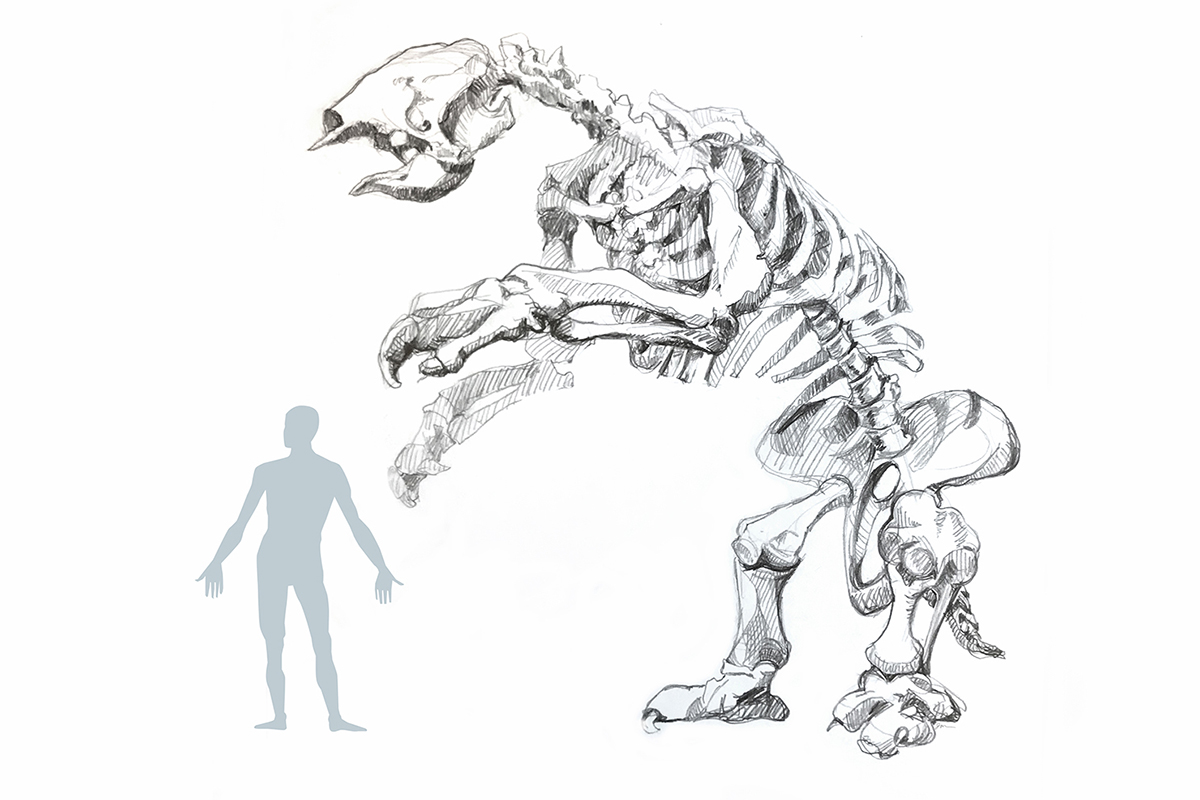
Fossilized tooth sheds light on the diet of the giant ground sloth
The giant ground sloths that trudged across the Earth millions of years ago weighed thousands of pounds and could measure as long as 20 feet in length. These long-since extinct herbivores could prop themselves up on their hind legs to reach twigs and leaves in trees.
The discovery of a giant ground sloth fossil has helped shed light on a year in the life of the sloth as it’s diet changed to adapt to variations in climate and vegetation.
The fossil was discovered in a sink-hole in Belize by divers, and Jean T. Larmon, a Ph.D. candidate at the University of Illinois at Urbana-Champaign analyzed a fossilized tooth from the remains along with a team of researchers.
Carbon dating and studying fossil teeth can be challenging if the tooth lacks enamel, and the researchers soon realized that isotopic analyses on certain layers of the sloth’s tooth were inaccurate.
Without enamel, some of the layers were more impacted by sedimentary processes that eventually led to fossilization than others.
A sloth’s teeth, like other herbivorous species, continue to grow throughout its life and so the fossil represented a unique opportunity to study dietary changes over time if the researchers could find the right layers to analyze.
Larmon and colleges analyzed carbon and oxygen stable isotope data from 58 samples collected from a single tooth of the fossil. The samples were collected from three layers of the tooth: the cementum and the outer and inner orthedentin. Cathodoluminescence microscopy was used to evaluate the data and ensure accuracy.
The carbon and oxygen isotope data differed from layer to layer, but the inner orthedentin layer seemed to have withstood the chemical and physical sedimentary processes over the years, and so that layer was used to date the tooth.
The researchers found that the tooth was around 27,000 years old and the sloth lived during the Last Glacial Maximum.
The variations in oxygen isotopes in the tooth indicated that the sloth lived during a year divided by short wet seasons and one long dry season and likely eat grass and shrubs during the wet seasons.
The study, published in the journal Science Advances and backed by the American Association for the Advancement of Science, shows that sloths in Belize changed their diets depending on the season and ate what was available.
—
By Kay Vandette, Earth.com Staff Writer
Main Image Credit: Stanley Ambrose













